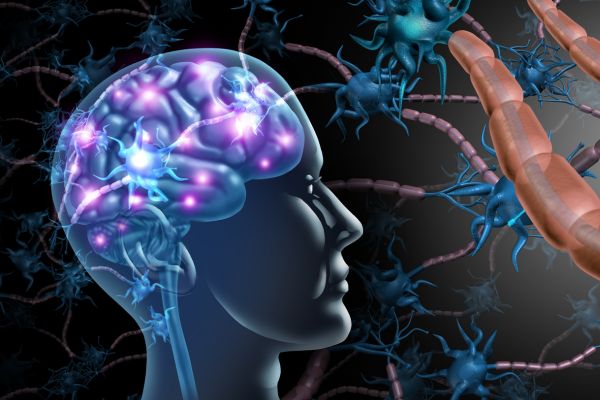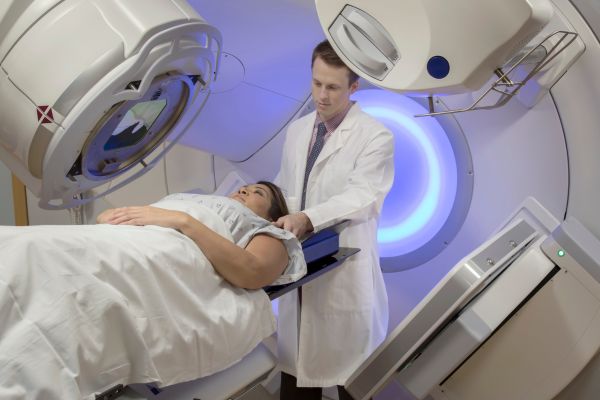Just like with most chronic diseases, the craniopharyngioma life expectancy is a serious concern for patients because of long-term complications and high recurrence rates. It’s rare, benign (meaning it doesn’t spread to other parts of the body), and yet, it can cause some serious challenges because of where it grows. This brain tumor attacks the region around the pituitary gland and the eye nerves (optic pathway).
While diagnosis often happens between the ages of 5 and 14, adults above the age of 50 can also suffer from craniopharyngioma. The tumor is often solid and cystic (fluid-filled), and can lead to other serious illnesses, hormone-level problems, and vision impairment.
Now, one of the biggest questions people naturally ask is about life expectancy after diagnosis. What factors determine survival? And what’s the outlook after treatment? This comprehensive article looks into craniopharyngioma life expectancy in children and adults, what to expect after being diagnosed, and living with the disease.
What is Craniopharyngioma?
Craniopharyngioma is a rare tumor that forms near the pituitary gland, a tiny but mighty structure that regulates our body’s hormones. This tumor is slow-growing, and at its initial development stages, it may be hard to detect. It’s not a cancer, strictly speaking, but due to where it grows, it can add pressure to other vital parts of the brain, like the hypothalamus, pituitary stalk, and the optic nerve.
There are mainly two types of Craniopharyngioma:
- Adamantinomatous craniopharyngioma (ACP), most common among children
- Papillary craniopharyngioma (PCP), typically affects adults.
Even though these tumors don’t spread, their growth can lead to more problems, including hormonal imbalance, vision, metabolism, and even cognitive function. This makes management quite complex. They account for about 6% of all primary brain tumors, with roughly 50% of the cases occurring in children below 14.

Craniopharyngioma Life Expectancy: The Big Picture
Generally, craniopharyngioma life expectancy is favorable, especially now that the medical sector has made advancements in surgery, radiation therapy, and long-term hormone management. Studies indicate that the 10-year survival rate can range from 80% to 90% and this depends on factors like age, tumor size, and how well it responds to treatment.
That said, survival is just one part of the story. Quality of life, hormonal health, and cognitive outcomes are equally important in understanding long-term prognosis.
What’s Life Expectancy in Adulthood?
Craniopharyngioma life expectancy in adults is a bit more promising because the tumor tends to take the papillary form. It behaves less aggressively and also responds well to targeted therapy.
Several studies, including those referenced by the NIH, suggest that adult patients typically have a life expectancy close to the general population if the tumor is treated and monitored. However, even with treatment, certain risks remain a concern. For instance, complications such as hypopituitarism (loss of pituitary function), vision problems, or obesity due to hypothalamic damage can affect long-term health.
So, what influences outcomes most in adults?
- Extent of tumor removal: Recurrence is reduced with complete surgical resection. However, this poses a higher risk, especially if the tumor is near critical brain regions.
- Radiation therapy: Modern targeted radiation, like proton beam therapy, can help control remnants without excessive brain damage.
- Endocrine management: Lifelong hormone replacement therapy often becomes a part of the patient’s routine. But with proper medical follow-up, it’s possible to manage.
In short, while adults may face some chronic effects, their craniopharyngioma life expectancy is still high, especially with multidisciplinary care.
Craniopharyngioma Life Expectancy in Children
Now, with children, craniopharyngioma takes a different turn. The more aggressive version, adamantinomatous, tends to develop in children and can recur with time even after treatment. Even then, children with craniopharyngioma have better survival rates than adults, standing at 95% or even higher for 10 years. That means kids have a 95% chance of living for 10 years or longer.
To achieve this, they’ll still need ongoing medical care and support after treatment to overcome the side effects, including:
- Hormonal deficiencies, which require lifelong medication.
- Stunted growth or puberty delays.
- Visual challenges.
- Difficulty in learning or behavioral changes emanating from hypothalamic involvement.
Children with craniopharyngioma have less to worry about survival. Rather, their main challenge is the quality of that survival. And since the tumor, together with treatment, impacts developing brains, the long-term side effects can ripple into adulthood.
That is why pediatric neuro-oncology teams put more focus on preserving function and reducing the long-term side effects. So, children’s treatment isn’t just about the removal of the tumor.

What Factors Influence Craniopharyngioma Prognosis?
People have different physiological makeup, and that’s why not all craniopharyngiomas behave the same way. Here are a few key factors that shape the prognosis and overall life expectancy:
Patient’s Age At Diagnosis
Younger patients, especially those below 5, may encounter more complications because of the tumor’s effect on development. Adults, on the other hand, often experience better functional recovery.

Tumor Size and Location
Not just craniopharyngioma, any tumor that invades the hypothalamus or optic pathway poses higher risks and can limit surgical removal. But modern imaging and surgical tools have made tumor cases more manageable than they used to be.
Extent of Surgical Resection
Complete removal gives the best chance of long-term control and, subsequently, higher craniopharyngioma life expectancy. But it’s a balancing act. Surgeons must decide between total resection and preserving crucial brain structures.
Recurrence
Even after “complete” surgery, craniopharyngioma can recur, sometimes years later. Recurrence rates hover around 20 to 40% depending on the surgical approach.
Post-Treatment Complications
Endocrine issues, visual loss, and hypothalamic obesity are some of the chronic effects that impact overall well-being. However, these complications don’t necessarily reduce lifespan if they’re properly managed.
Modern Treatment Options: What’s Changed?
Before modern treatment options became popular, surgery (craniotomy) was the main method of removing the tumor. It’s a delicate, high-stakes procedure through the skull base. But now, treatment is far more refined.
Minimally invasive surgery
Endoscopic transsphenoidal surgery (through the nasal cavity) allows surgeons to access the tumor with minimal trauma. This procedure works best if it’s a smaller or midline tumor.
Radiotherapy
In situations where full surgical removal isn’t feasible, targeted radiation like proton beam therapy or stereotactic radiosurgery (Gamma Knife) helps control the remaining tumor cells. This approach drastically reduces collateral damage to healthy brain tissue, and this makes it a major win for long-term outcomes.
Radiotherapy can also be administered after surgery to try to prevent the tumor from recurring. For small tumors, radiosurgery or stereotactic radiotherapy can be used. Both treatments deliver high radiotherapy doses to the tumor, which can be effective in stopping it for good.
Targeted Therapy
For papillary craniopharyngiomas in adults, researchers discovered that many carry a BRAF V600E gene mutation, the same one often seen in some skin cancers. Targeted drugs like BRAF inhibitors (e.g., vemurafenib) have shown promising results in controlling these tumors.

Hormone Replacement and Supportive Care
After treatment (surgery or radiation), most patients need lifelong hormone replacement to help manage the deficiencies in growth hormone, thyroid, adrenal, or sex hormones. With proper medical supervision, hormone replacement allows patients to have a normal life expectancy and good quality of life.
Long-Term Outlook After Craniopharyngioma Diagnosis?
The long-term outlook after diagnosis is important because it accounts for a better craniopharyngioma life expectancy. The term “benign” in craniopharyngioma can be somewhat misleading. While the disease isn’t cancerous, it behaves like one in terms of how closely it must be managed.
This means patients have regular appointments after completing treatment. With every appointment, doctors do thorough examinations and ask patients whether they’re experiencing any side effects or symptoms. Some of the tests that are carried out during the checkup include:
- Hormone levels checks
- MRI scans
- Eye tests
The frequency of appointments generally varies with each patient’s situation. Most people undergo the checkup between 6 and 12 months, and this can go on for up to 5 years.
Challenges Beyond Survival
Even with high survival rates, the journey can have bumps along the way. Patients, working closely with their caregivers, need to manage some of the health issues that show up even after treatment. They need to be aware of not just visual, but behavioral, neurocognitive, and emotional changes, as these may affect the quality of life.
Visual problems
Due to the craniopharyngioma’s proximity to the optic chiasm, the region of the brain where optic nerves sit, patients may experience visual problems even after treatment. These challenges can occur in 50 to 80% of patients. Additionally, younger patients are also more likely to have persistent visual problems.
Some patients may experience partial vision loss, reduced visual fields, or difficulty with depth perception. But with early diagnosis and careful surgical planning, it’s possible to reduce these risks, but it won’t completely eliminate them.
In most cases, visual rehabilitation, adaptive training, and assistive technologies help people adjust and be independent. Regular eye exams and neuro-ophthalmologic care are essential for detecting subtle changes early and preserving as much sight as possible in the long term.

Hormonal imbalances
Craniopharyngioma can badly affect the production of hormones by putting pressure on the pituitary and hypothalamus glands as it enlarges. This often happens after treatment and might require lifelong hormonal replacement.
These adverse side effects can also come from radiation therapy or surgical removal of the tumor. In certain cases, the treatment may entail intentionally removing bits of the surrounding structures, like the glands, to completely remove the tumor.

Weight Gain and Metabolic Issues
After treatment, craniopharyngioma life expectancy may continue to be a bigger concern, even with the tumor gone. This is because patients may have to deal with one of the most common long-term complications: hypothalamic obesity. It’s mainly caused by damage to the hypothalamus during tumor growth and treatment.
This part of the brain regulates hunger, metabolism, and energy balance. So, when it’s disrupted, the body’s “thermostat” for appetite and fat storage goes haywire. Even small calorie intakes can cause rapid weight gain that can be difficult to reverse.
Managing it isn’t as simple as diet and exercise; it often requires a combination of medical supervision, hormone therapy, and psychological support. Some patients can also benefit from newer weight management drugs that can help restore balance to metabolic processes.
Future Directions: Where Research Is Heading
Craniopharyngioma research is evolving fast. Researchers are looking into ways of improving the diagnosis and treatment of this benign tumor instead of just focusing on removing it. Current studies are exploring:
- Genetic profiling to personalize treatment, especially for BRAF mutations.
- Hormone modulation therapies to minimize hypothalamic complications.
- Advanced radiation planning to reduce side effects
- AI-driven imaging analysis to predict recurrence earlier.
Conclusion
Craniopharyngioma life expectancy among 90% of patients is at least 10 years. This means that the patients can survive for more than 10 years after surviving the treatment. While they may experience visual and hormonal deficits, most patients who’ve suffered craniopharyngioma can continue living with fewer major disruptions to their quality of life. For this to happen, a multidisciplinary medical team must work in tandem with supportive caregivers to offer the best possible care for the patient.

